- Event Weeks
- Water Vapour Products Event Week 2022
Water Vapour Products Event Week 2022
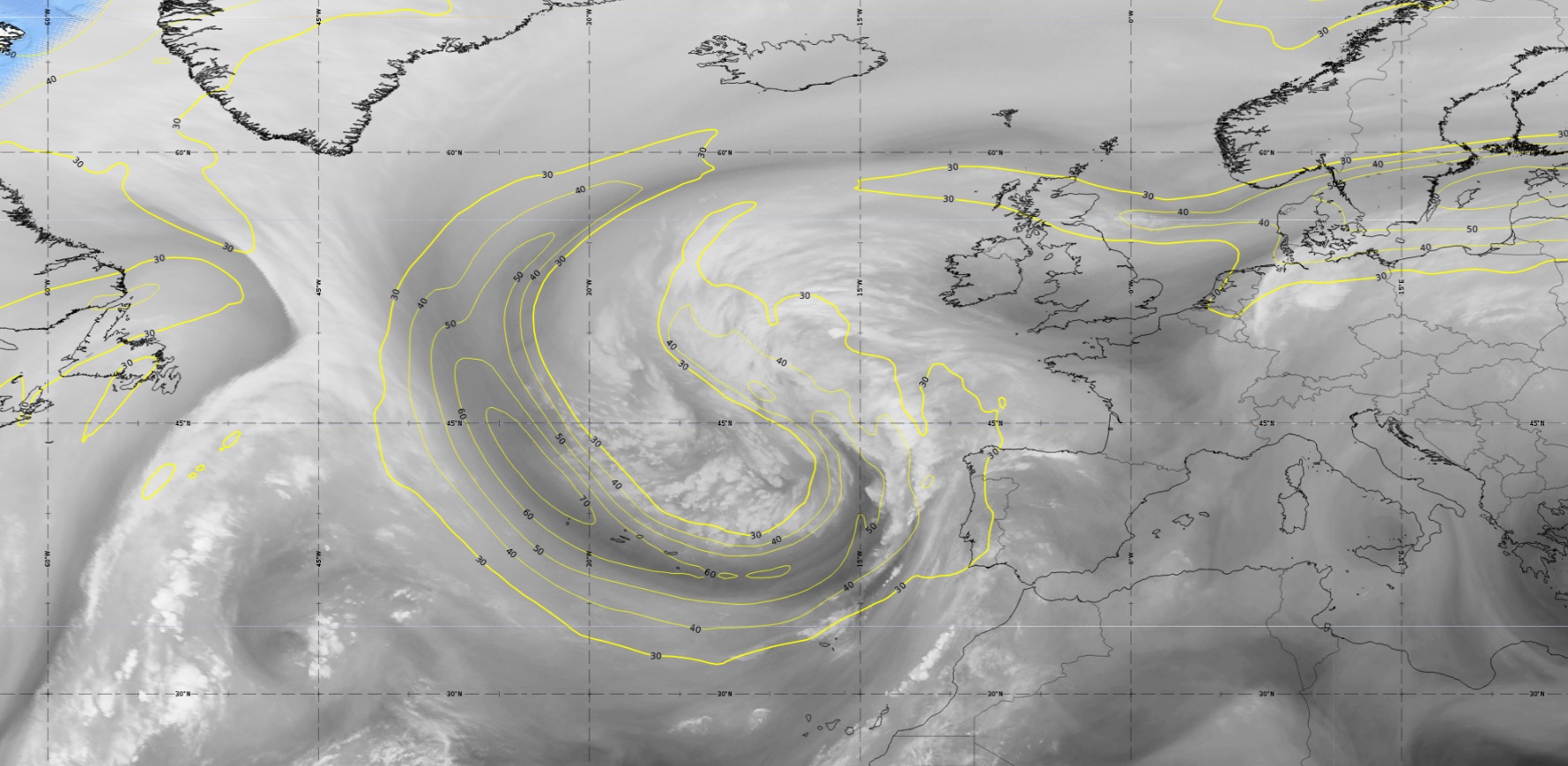
From 12 to 15 December 2022, EUMeTrain held an event week on water vapour products and their use in the analysis of weather.
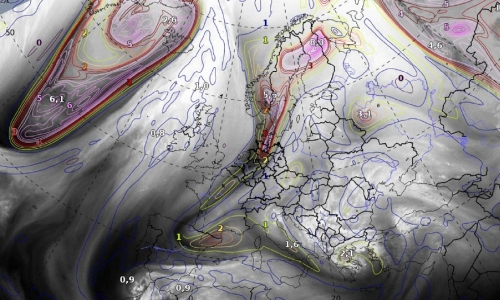
Session 1 - 12 December 2022
Wilfried Jacobs (DWD): Basics of Water vapour channels in satellite products
The target group of this presentation is participants that are not familiar or do not feel familiar enough for understanding the presentations during the entire week. The first presentation deals with basics of vapour water channels in satellite products. First, the principle of radiation and radiation transfer will be outlined briefly and put in relation to wave lengths of imagers and vertical sounders by considering weighting functions. The second part deals with some examples by using single channels. Finally, corresponding composites (RGBs) and their applications will explained in detail.
Ivan Smiljanic (EUMETSAT): Novel MTG solar WV absorption channels (NIR 0.9, NIR 1.3), related novel RGBs
Water vapour molecules, i.e. a water gas in the atmosphere, absorbs radiation in different parts of spectrum. With present geostationary satellite, MSG, this fact is mostly utilised in the spectral region around 6 or 7 microns, i.e. in the Infra-red region. With the next generation of geostationary satellite, MTG, it will be possible to observe the processes of WV absorption in the solar part of the spectrum, namely around 900 and 1300 nm. A bit different processes of absorption, but also scattering are happening around those wavelengths – we will take a look what is exactly happening there, and how to utilise these processes to detect different features in the atmosphere.
Pieter Groenemeijer (ESSL): Detecting low-level moisture with proxy data at ESSL events in preparation for MTG
In preparation for MTG data, ESSL is carrying out a series of expert workshops and Testbeds in collaboration with EUMETSAT. At both event types, the increased capabilities of detecting low-level moisture from geostationary orbit, which the MTG program will enable, have received a high amount of attention. In our presentation, we will discuss a number of convective storm cases that were studied using proxy data from polar-orbiting instruments, such as MODIS. One of the ways to visualize lowlevel moisture is by depicting the ratio of the 0.91 and 0.85 µm channels with an intuitive color scale. We will discuss to what extent this and other proxies for low-level humidity can be used to anticipate the presence of a crucial ingredient for severe deep, moist convection...
Hans Peter Roesli: Low level moisture in 0.9 micrometer band channels
At the time of refining the FCI requirements for nowcasting applications, numerical forecasts had much difficulty in handling low-level humidity (low-level forecasts rapidly dried with increasing forecast time). This was one of the reasons why the expert team for nowcasting proposed to add in MTG’s FCI.a solar water-vapour-absorbing in the 0.9-micron region (now NIR 0.914 micron) alongside the clear NIR 0.865 micron band. Although nowadays operational numerical models have overcome the moisture problem, NIR 0.914 might still find valuable applications, in particular when accounting for the frequent imaging of the same scene in daylight. MODIS includes a clear NIR 0.8585 band and 3 bands in the 0.9-micron region: 0.936, 0.940 and 0.905 micron, with decreasing water vapour absorption. Selecting NIR 0.8585 and the weakest absorbing NIR0.905 as proxy bands for FCI some meteorological situations were investigated, where low-level humidity monitoring could have been beneficial to nowcasts. MODIS flying on Terra and Aqua usually deliver two daylight overflights of the same scene, which allows for a rough appreciation of evolution in time. Gao&Kaufman (2003) discussed the MODIS bands in view of the MOD05/MYD05 products for Total Precipitable Water Vapour. Based on their paper MODIS imagery of the reflectivity ratio 0.905/0.8585 was produced as a proxy for FCI. Taking the ratio is simple and damps further the (minor) differences in background reflectivity between the two bands. It was found that the ratio generally varies between 0.6 (humid boundary layer) and (dry boundary layer), as already given by Gao&Kaufman. Examples under clear European skies will show situations of old frontal zones, convergence lines or north foehn. A more complex situation of low-level moisture advection under cloudy skies over the Po Valley affords the frequent FCI imaging, in order to get the full picture of the moist-air advection.
Ivan Smiljanić (EUMETSAT): Low level humidity – ingredient for cloud formation (convection, fog)
High humidity in the air, close to the ground, could make you feel soggy in the summer but otherwise you won’t notice it. So why is it important to know all about it – is there a lot or very little moisture, where is it, what are dynamics of the moisture field? Well, moisture is really a key ingredient for many features in the atmosphere that can affect our daily lives to a high degree, from thunderstorm clouds to a fog or rime. In this session we will see how water vapour becomes a fuel for features in atmosphere to form, through a few real examples.
Bryan Guarante (University of Wisconsin): Assessing NWP with Water Vapour Imagery
In dynamically-active regions of the atmosphere, water vapour imagery approximates the same surface as the 1.5PVU height or pressure surface. Because of this, we can take advantage of the WV channels to find areas of mismatch between the NWP and the real atmosphere to adjust our synoptic scale forecasts.
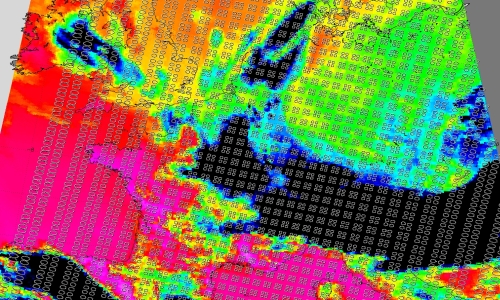
Session 2 - 13 December 2022
Thomas August (EUMETSAT): Water-vapour profiles from satellite sounders, characteristics and potential for weather forecasting
Satellite infrared sounders like IASI allow retrieving the vertical structure of the atmospheric humidity. Their measurements are exploited in synergy with the microwave (MW) sounders, when such companions are present on the same platforms as is the case in the operational EUMETSAT Polar System (EPS) programme and in the EPS-Second Generation (SG). This synergy increases the yield and quality of sounding in cloudy pixels. The future infrared sounder (IRS) onboard Meteosat Third Generation (MTG) will operate without MW companions. It will however provide unprecedented spatiotemporal sounding, with a typical ground-resolution of 7km and observations every 30 minutes over Europe. The extensive utilisation of machine learning guarantees the provision of reliable atmospheric temperature and humidity profiles and uncertainty estimated within less than 30 minutes from sensing. We present here the characteristics of satellite thermodynamic profiles from the current and future missions and the experience made in studies with meteorological services to contribute to nowcasting severe weather events, and prepare to the future sounder missions.
Jan El-Kassar and Cintia Carbajal Henkel (Free University of Berlin): Towards a Near Infrared Total Column Water Vapour Retrieval for MTG-FCI
MTG-FCI will feature a band configuration in the rho-sigma-tau absorption band of water vapour (0.865 and 0.914 microns). We are developing an optimal estimation algorithm for these two bands to retrieve a total column water vapour product, which will be highly sensitive to boundary layer moisture. We show preliminary results from a first prototype based on COWa (Copernicus Sentinel-3 OLCI Water Vapour) applied to spatially high-resolved data (~300m) from the Ocean and Land Colour Imager (OLCI) onboard the polar-orbiting satellites Sentinel-3. In a next step we analyse the relationship between spatial variability metrics in the water vapour field and convective initiation over Germany, exploiting the advanced observation capabilities of current and future satellite-based imagers.
Xavier Calbet (AEMET): Small scale variability of Water Vapor in the Atmosphere
Water vapor at small scales (< 6 km) behaves, on average, in an stochastic way. This behavior can be described by simple stochastic models (Gaussian Random Fields). Knowing the variability (or turbulence) of water vapor in a location, mainly via measurements, we can infer the statistical characteristics of water vapor fields in its vicinity. This model will help us in: determining whether water vapor measurements from satellites can be more or less biased, integrate different water vapor measurements coming from differing spatial scales together in a coherent way, estimate the turbulence that is potentially present in the atmosphere. Direct consequences of this concept regarding Nowcasting still need to be explored in the future.
Sheldon J. Kusselson (CIRA): Deriving Total and Layered Precipitable Water Products – Applications for Forecasting for Hazardous Precipitation Events
Water vapor availability is a key factor in forecasting heavy precipitation. Passive microwave instruments onboard several polar orbiting spacecraft measure emission from water vapor and provide a capability to sense layers of and total water vapor in the atmosphere. Via fusion of passive microwave retrievals from five or more polar orbiting spacecraft and model wind fields, the Advected Layered Precipitable Water (ALPW) and Total Precipitable Water (TPW) products are created hourly. The new ALPW product and upgraded Total Precipitable Water products, including a percent of normal TPW product, will become operational for forecasters in 2023. In the meantime, CIRA already produces the products hourly on the internet. During the past decade applications for the ALPW and TPW products have been developed for many different types of weather events, with a focus on heavy precipitation. This presentation will highlight applications for various weather hazards such as heavy rain causing flooding and heavy snow. Case studies using applications for the ALPW and TPW products in different parts of the world, including Europe, will be presented.
Recording Sheldon J. Kusselson
Phil Watts and Loredana Spezzi (EUMETSAT): EUMETSAT Water Vapour retrieval for the future METimage instrument on board of EPS-SGsatellite series
The METimage instrument on board of the future EPS-SG satellite series opens a new era for the retrieval of water wapour imaging products at EUMETSAT. Equipped with 20 channels covering the spectral range 0.4-13µm and including both Near infrared and thermal infrared water vapour absorption bands (0.9, 6.7 and 7.3µm), METimage will allow the retrieval of operational water vapour imagery products with unprecendented resolution (down to 500m) from a low-Eart orbit. These products are expected to greatly enhance the EUMETSAT service in support of numerical weather prediction, nowcasting and climate monitoring. In this contribution, we report the retrieval approach chosen for METimage water vapour imagery products and demonstrate it using MODIS measurements. We focus in particular on the uncertainty and quality assessment planned for these products. We aim at gathering the fundamental user feedback to achieve the state-of-the-art retrieval and validation approach, and to foster cooperation and exchange for the analysis and characterization of these products once they become available. In particular, we would like to discuss key points that have an impact on the use of our products in forecasting applications (such as the use of prior forecast information in the retrieval, the product spatial resolution and content (e.g., uncertainties, quality indicators, diagnostic parameters, etc., and the advantage of combining NIR/IR measurements, not available from previous EUMETSAT missions).
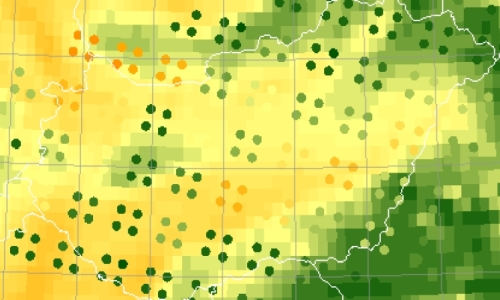
Session 3 - 14 December 2022
Zsofia Kocsis (OMSZ): Evaluation of IASI convective parameters – merging with Synop data
Using IASI L2 profiles, different instability indices (e.g. Lifted Index, CAPE) and water vapour content in different layers can be determined, which provides information on the convective environment. These indices were studied in several convective cases which led us to try to merge the IASI profiles and Synop measurements. In this presentation we present the reasons why we choose to combine these different measurements and we also present some of our experiences with the blended IASI product.
Christian Herold (DWD): Are EARS-IASI L2 useful for nowcasting sting jets?
Strong winds southwest of the center of a Shapiro-Keyser-Cyclone are often associated with a cold conveyor jet or a sting jet. The sting jet is a strong mesoscale flow with a very high damage potential. It is a massive challenge for NWP and forecasters to correctly predict a sting jet. The question is, can IASI profiles help forecasters for a better prediction of such mesoscale severe wind events connected with sting jets? In this specific context, some case studies will be presented.
Nataša Strelec-Mahović (EUMETSAT): WV signatures in mid/high atmosphere - dark stripes, WV eyes, dry intrusion, waves/turbulence.
Features occurring in the WV6.2μm images indicate the processes going on in the atmosphere, since these dark (dry) and white (moist) structures result from a combination of vertical motion, moisture advection and horizontal deformation within the mid and upper troposphere. Frequently, water vapour images reveal structures such as dark stripes, mountain wave signatures, or circular or spiral formations known as water vapour eyes, eddies or vortices. We will look at how these features can be used as tracers of three-dimensional atmospheric motions on the meso- and synoptic scale and how they relate to e.g. jet-streams, upper-level lows or turbulence.
Recording Nataša Strelec-Mahović
Christo Georgiev (NIMH): Large-scale diagnosis of interaction between potential vorticity anomaly and tropical cyclone, and related planetary influence on severe thunderstorm environment
Water vapour (WV) images provide useful information to anticipate the effects of upper-level dynamic environment on the intensity of a tropical cyclone (TC) as well as on its extratropical transition (ET), a gradual process in which a TC loses tropical characteristics and becomes more extratropical in nature. Analyses of WV imagery shows that during ET stage over subtropical areas, advection of potential vorticty anomaly can influence the ET and control the process. Large amounts of water vapour, originated by TCs may be involved in transfer of moisture by planetary waves, associated with ET developments and give rise to a narrow regions of strong meridional water vapour flux. The presentation shows WV imagery synoptic-scale analysis, which shows supply with additional large amount of moisture of an existing already favourable convective environment. The combination lead into an environment with very high CAPE and potential to accelerate upward, acquiring kinetic energy and forming strong vertical motions in a deep tropospheric layer. The process is illustrated by a case of catastrophic hailstorm over Bulgaria, Eastern Mediterranean.
Christo Georgiev (NIMH): Synoptic- to meso-scale diagnosis of dynamical processes, which govern the intensification of wildfire activity
Studies of large fires in Australia, Tasmania, USA and Southeastern Europe have shown a link between fire activity and dry stratospheric intrusions with downward transport of energy and momentum down to the lower troposphere. In such cases the rapid increase of fire activity was accompanied by a dry band in satellite Water Vapour (WV) imagery, which is indicative of pronounced descent of upper-tropospheric or stratospheric air which is normally much dryer than the lower tropospheric one and has much higher potential vorticity. When these descending air masses, reach the Earth’s surface they affect the wind speed, moisture and ozone concentration, which could generate a spike in fire activity. Case-study examples of such severe events over areas of Central and Eastern Mediterranean are considered in the presentation. Combination of WV imagery, satellite soundings and satellite estimations of fire radiative energy contribute to better understanding of dry stratospheric intrusion depth and related dynamical processes, which govern the intensification of wildfire occurrence and spread.
Ralph Petersen (University of Wisconsin): Short-range Forecasts of Satellite-derived Moisture and Stability Products using an Ensemble of Satellite Moisture Retrievals
The CIMSS Lagrangian NearCasts system 1) expands the utility of clear-air sounding and products related to the pre-convective environment (from MTG-IRS Sounder and MTG-Imager) into the 1-9 hours period before storm formation and 2) now combines Geostationary Infrared Products with less frequent microwave products from multiple Polar Orbiting systems to fill information gaps in cloudy areas. For a heavy precipitation event, quantitative measures of both retrieval and short-range forecast accuracy are provided, including a new, non-uniform bias correction approach, and explorations of predictive clear-sky RGBs. Including “all-weather”, real-time MiRS retrievals not only provide a more visually pleasing product (improving coverage by 30-40%), but also exposes forecasters to here-to-fore underutilized POES observations over land. Validation against hourly surface-based GPS-TPW observations testify to the ability of the Satellitebased products to capture observed small-scale moisture features properly. Results show error growth rates < 1%/hour (without initial shocks) and support applying non-uniform bias corrections derived over 5mm bands to assure realistic TPW distributions. Because RGB presentations are more popular than quantitative retrieval product displays the parcelbased Lagrangian NearCast approach was also used to “predict” clear-air RGBs based on the projection of radiance, with quantitative values overlaid. Examples of initial tests will be shown.
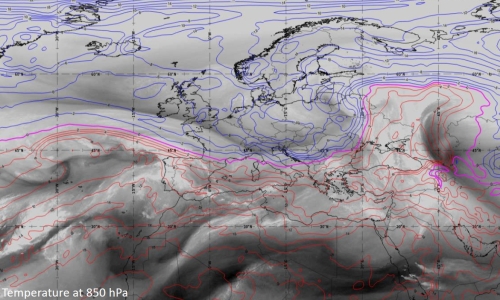
Session 4 - 15 December 2022
Andreas Wirth (ZAMG): The benefit of using WV-imagery in diagnosing fronts and cyclogenesis
Water vapor (WV) imagery is very useful when it comes to visualize zonal and meridional transport of air masses, but it is also suited to get a rapid overview on vertical transport processes. This characteristic makes WV-imagery extremely helpful when it comes to diagnose fronts and cyclogenesis. The presentation will focus on the dynamics of cyclogenesis and fronts and how they are reflected in WV-imagery. The concept of relative streams will be introduced in the context of cyclogenesis, anaand kata fronts. Meteorological products based on WV absorption bands such as the Total Precipitable Water product will be introduced and their usefulness will be demonstrated on case examples.
Wilfried Jacobs (DWD): Convective line – no convective line?
Especially, the airmass RGB is a powerful tool for estimating the cold front’s tendency to transform to a convective line. Convective lines are connected with strong gusts, heavy precipitation sometimes with graupel or even hail. During this presentation the indications of convective lines will be outlined by considering the airmass RGB together with other means, e.g., radiosounding. Examples of two succeeding days will be discussed in detail whereas the first case did not lead to a convective line whereas the second example did. Typical differences of patterns in the corresponding airmass RGB and additional data sources will be related to a convective line’s probability.
Thomas Krennert (ZAMG): Are Upper Tropospheric Moisture Gradients relevant for the Development of Deep Moist Convection?
The exact predictability of convection in the Alpine region in the absence of fronts in weak-surfacepressure-gradient-situations during the warm season remains challenging for forecasters. The development into single-cell deep moist convection SC-DMC under these conditions depends on the availability of well-known ingredients like low level moisture, steep tropospheric lapse rates and sufficient lift. Satellite studies have shown that favourable locations for the first onset of SC-DMC resulting from widespread shallow convection over mountainous terrain are water vapour gradients in the middle or upper troposphere UTMG (upper tropospheric moisture gradients, Krennert, et al., 2003, https://doi.org/10.1016/S0169-8095(03)00067-X). The contributions of the respective ingredients related to UTMG supporting the initiation of DMC are discussed. A focus is set on moist symmetric instability MSI as a possible mechanism for favouring the transition from shallow to deep moist convection.
